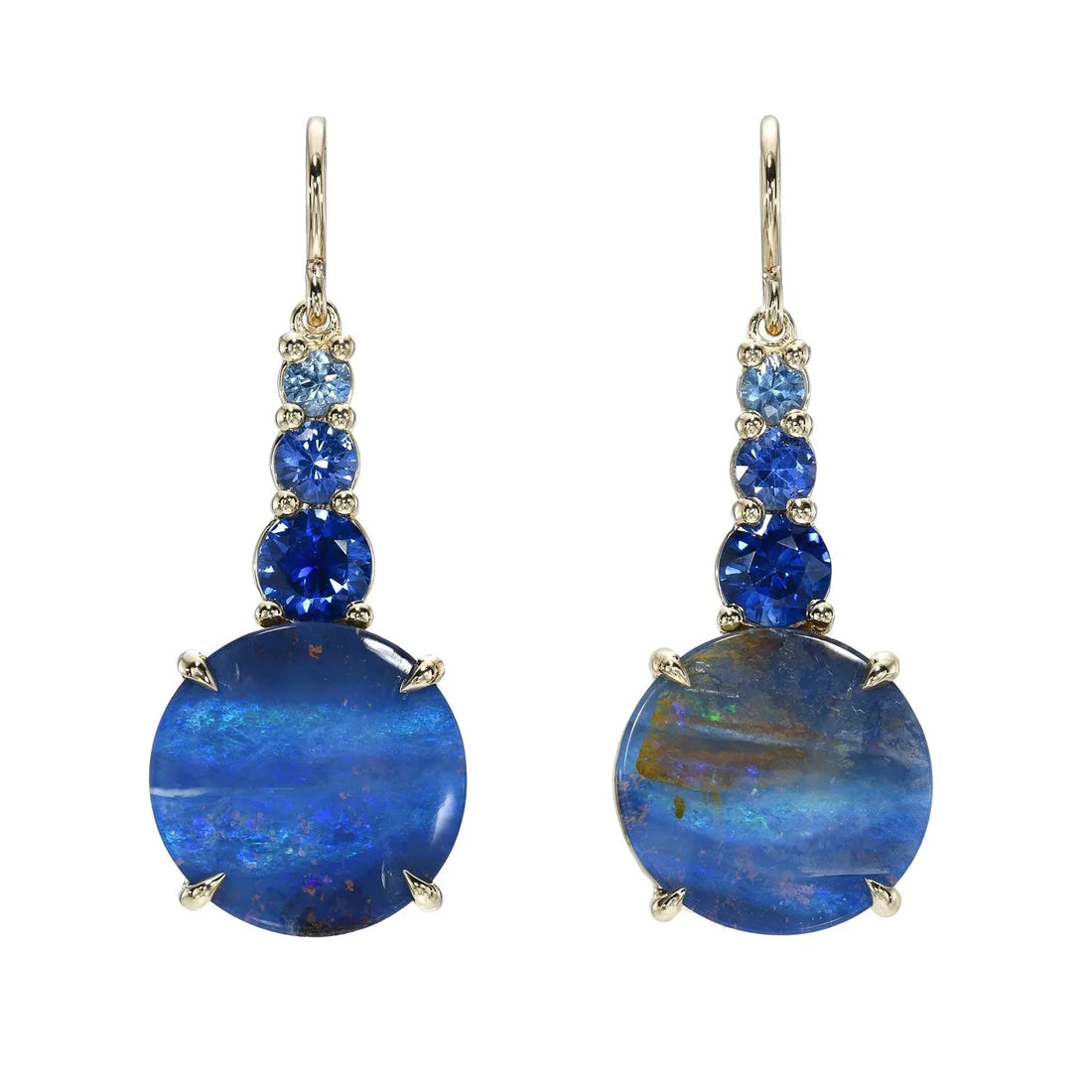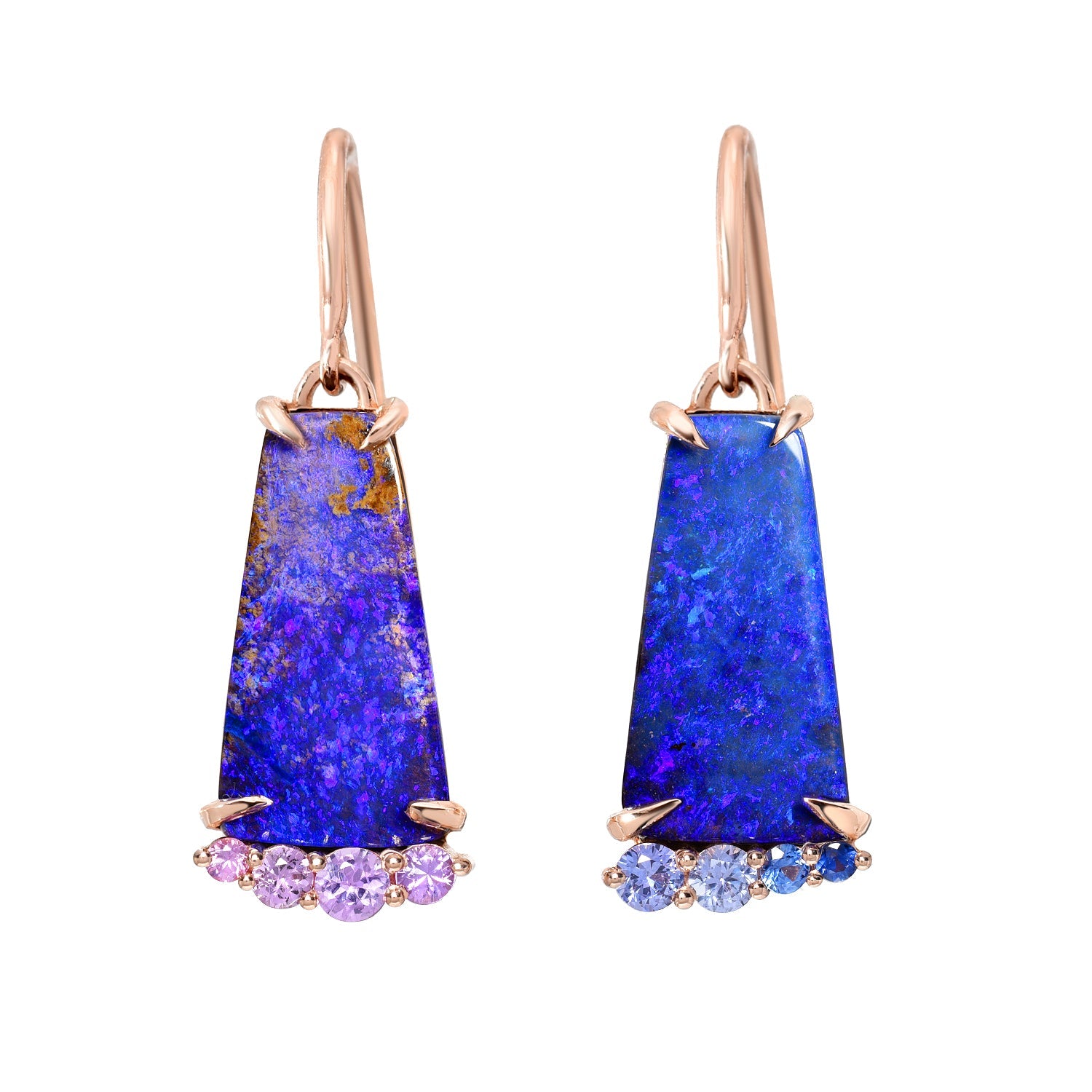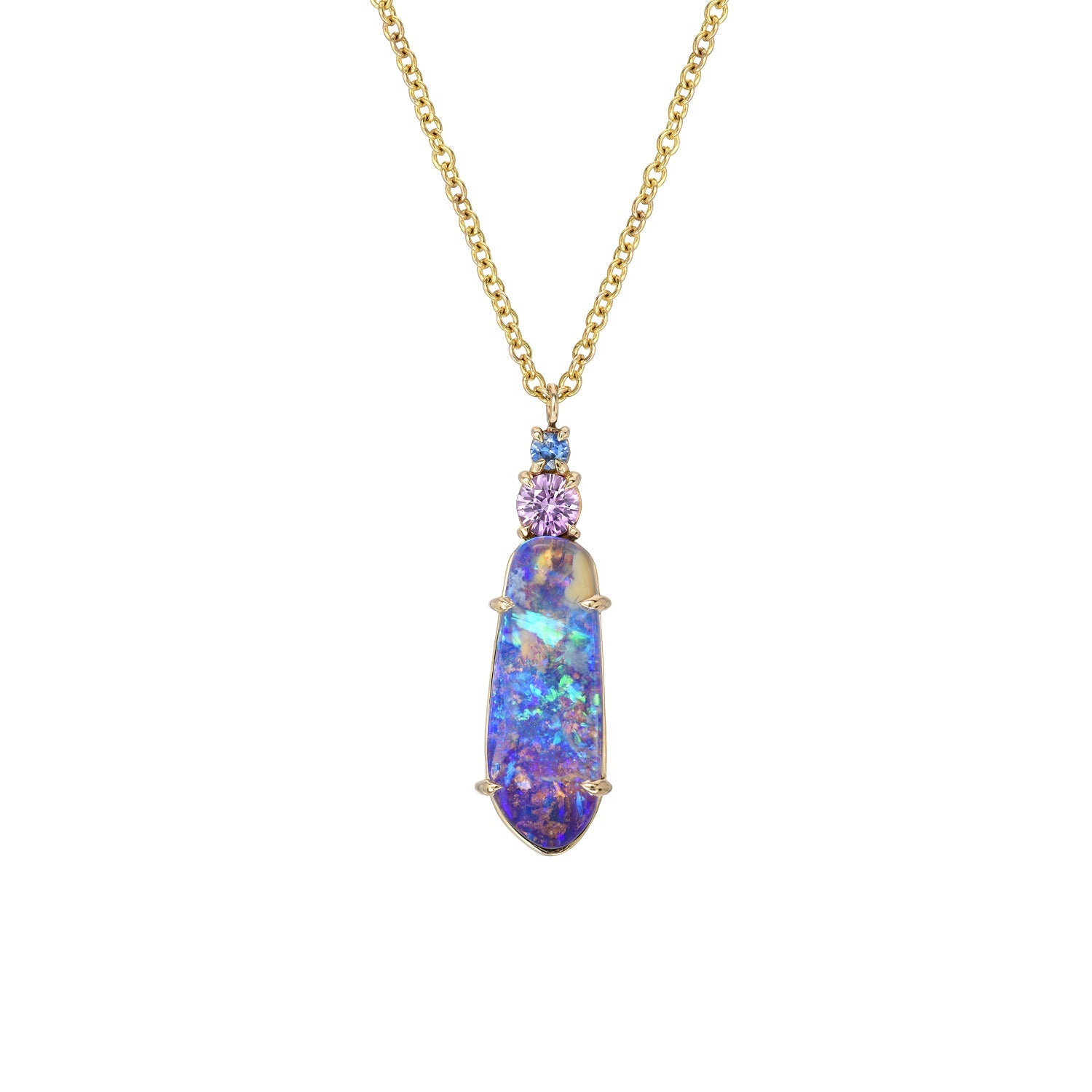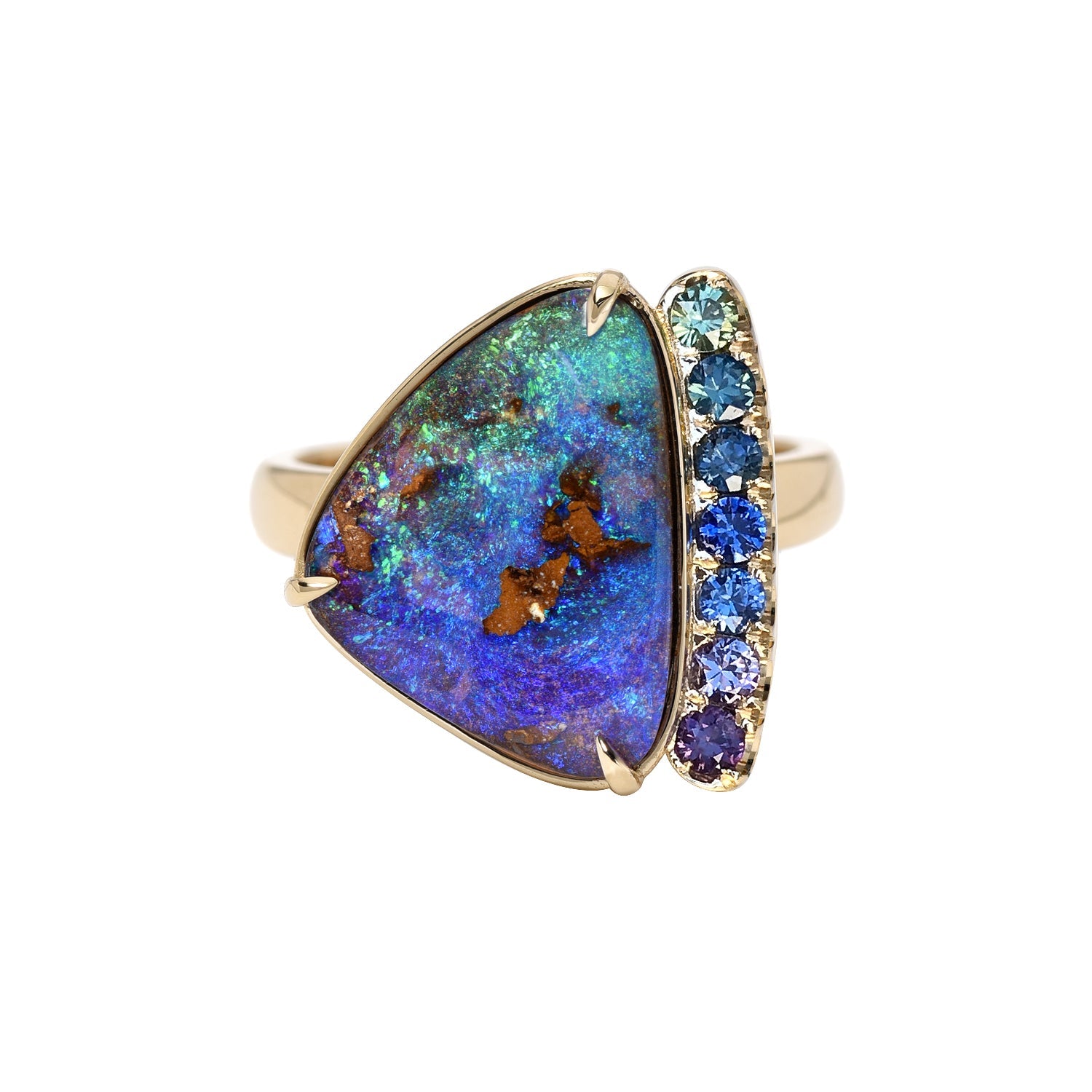
Uses of Opals
luis gomezShare
It takes millions of years for a single Opal to form — to finesse its way into existence. Each stone is a product of natural forces and perhaps a bit of sheer luck. From the Australian outback, to the now almost desiccated mines in Eastern Europe, all the way to newly formed markets, like Ethiopia — each of these places produces one-of-a-kind Opals, each one unique and beautiful. And every stone is given purpose, not by nature, but by humanity. We extract it, allocate it, and assign it intention. In this article, we’re going to talk about the different usages, modern and old, of Opal gemstones. How we, as humans, have given Opals different purposes throughout history. We'll answer the question, "What are Opals used for?"
Usage of Opals — What are Opals used for
Jewelry
The most common use of Opals, the one that permeates through time, is their use in jewelry like necklaces and opal earrings. Precious Opals in particular, have become coveted possessions by Opal Collectors due to their rare and exceptional beauty. History is rife with personages, amongst them Cleopatra and Empress Josephine, who have been devoted patrons of this breathtaking gemstone. For years, Opals were far more desired and lusted after than other gemstones like sapphires, pearls, and diamonds. Opals were the customary center stones for wedding rings up until the early 15th century. One of the most famous types of Opal used in jewelry, and one of the most expensive, is the legendary Black Opal. It’s been estimated that over 90% of all Opals mined are used in the creation of Opal jewelry.
Polishing Mediums
Diatomaceous Opal, sometimes referred to as Fuller’s Earth or Tripoli, is a unique type of stone because it contains diatoms. It is commonly used as a fine powder abrasive on metals and other gemstones. It is quite prized in the field due to its super-fine polishing capacity.
Skin Care Products
Another use of Diatomaceous Opal - or Opals containing diatoms - is in skincare products. A range of cosmetics including neck and facial skin preparations, rinse off masks, exfoliative soaps and hair tonics have incorporated this material into their formulations.
Filtration Systems
Diatomaceous Opal is also employed heavily in the form of filtration systems. It works wonders at a microscopic level when it comes to filtering out bacteria and other contaminants from water and other liquids.
Construction
Opal has been cited as utilitarian in construction — specifically in the creation of sewer-pipe, ceramic, and refectory mixes.
Fertilizer
Among its other unusual applications, Opal is sometimes used as an ingredient in fertilizer.
Health and Medicinal Products
For years, particularly during the Dark Ages, Opals were regarded for their curative abilities. Most of those “abilities” are highly debatable. During bouts of the Black Plague, “doctors” would employ Opals in an effort to combat the disease — a common practice was to grind the gemstone and mix it with water, creating a sort of brew or tea, that would later be consumed by the infirmed. Today, Opal is no longer used as care to fight off plague. BUT, it is very much in use in the pharmaceutical industry (ie: as a blood clotting activator) and in the cosmetics industry as an absorptive ingredient.
Talismans
For ages, Opals were employed as spiritual ornaments. They were utilized as talismans against negative forces. So prevalent was Opal's use as a deterrent against malice that the history of the Nazar - the iconic dark blue charm with an eye in the middle used to ward off the Evil Eye - can be traced back to Opals. Opal gemstones were the original charm, but due to their scarcity, and their cost, few could afford to buy them — so people began to substitute placeholders or other “talismans” that resembled Opals in order to feel secure against supernatural forces.
Healing Properties
Opals are used in various New Age practices for their healing properties. They are believed to ease stress, deflect negativity and encourage passion, freedom, and cosmic awareness. Opals are said to stimulate originality and creativity, and even promote mystical visions.
Dental Implants
Although not a common use, Opals have been employed throughout the ages in even primitive forms of Dentistry. Archeological finds from ancient Mayan civilizations have revealed teeth inlaid with gemstones, the likes of turquoise, jadeite, and yes — Opal.
Even in modern times, some have found an appeal to this type of panache. One of the most famous cases is that of a Lightning Ridge miner named Harold Hodge. In the early 1950s, Harold moved to the Ridge. He quickly fell in love with Opals and not only became an amateur miner but one of the most aggressive Opal buyers and traders in the area. One day, when he lost his front denture plate, out of a blind passion for the gemstone, Harold visited a local dental surgeon to replace it — but with Opal teeth embedded instead. He handpicked and polished the Opals from his own personal collection, and the Dentist, Dr. Brown, executed the cutting and shaping of his new Opal teeth. Harold’s rainbow smile made him an overnight local celebrity, and his dentures continue to attract attention to this day. They can currently be found on display at the Australian Opal Centre.
Birthstone
A special function of Opals — their designation as the birthstone of October.
Optics and semiconductors
Although still in early development, another use of Opal (synthetic Opal) - one science is still trying to harness - is as a flexible semiconductor. Opals, due to their ability to refract light, have piqued the interest of industry leaders and engineers — particularly since synthetic Opals are easy to produce and can come to replace other far more valuable semiconductors.
Useful in so many unexpected ways, here at NIXIN Jewelry we remain biased toward using Opals in ways that display their extraordinary beauty. Come explore, and we’ll take you on a journey inside Opal Jewelry Reimagined.





